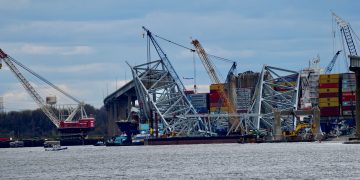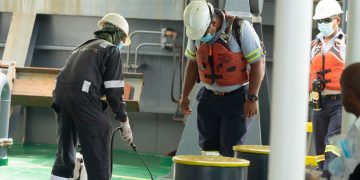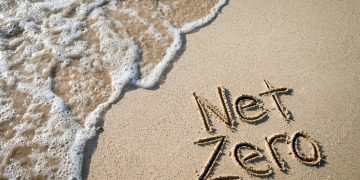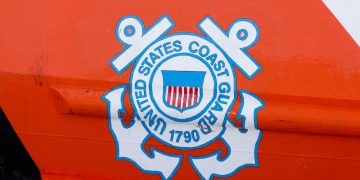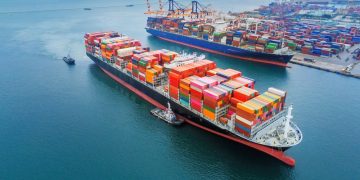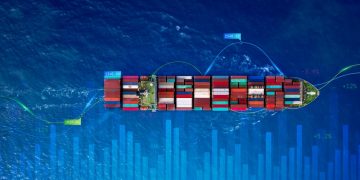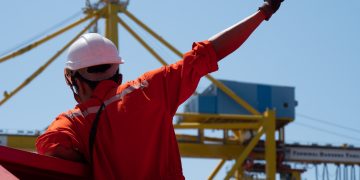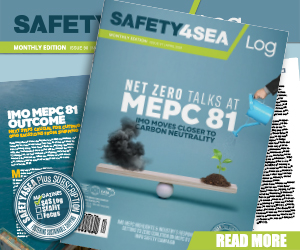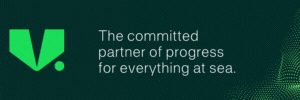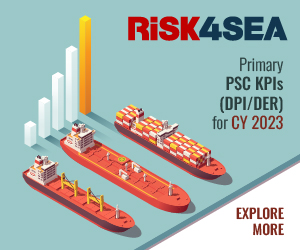UK P&I club describes an incident caused by dragging anchor, while examines possible ways to prevent a ship from dragging its anchors.
The incident
At 16:55 local time on May 8, 2020, the cargo vessel Nomadic Milde, which was anchored in the Mississippi River near New Orleans, Louisiana, began to swing due to the strong current of 4 to 5 knots.
This ship dragged its anchors and eventually collided with the bulk carrier Atlantic Venus, which was anchored nearby.
After colliding with the Atlantic Venus, the Nomadic Milde struck a nearby chemical dock and then grounded on the bank.
There were no injuries but the Nomadic Milde released an estimated 50 liters of lube oil into the river. Damage to the two ships and the dock was an estimated $16.9 million.
Probable cause
The bridge team of the Nomadic Milde did not effectively monitor the ship’s position. As a result, the bridge team did not notice that the ship was moving toward another nearby ship by moving from the original anchorage position due to dragging anchors and the strong river current.
Actions taken when dragging the anchor
If a ship starts to drag the anchor or anchors, all methods available must be used to stop this problem. First, the anchor or anchors must be raised immediately. When this step is taken, attention must be paid to the following points.
- The capacity of the windlass may be insufficient due to external forces. If this happens, an excessive amount of actions taken may place a burden on the windlass that results in damage and the inability to operate the windlass any longer. (Example: Grounding of Ship A on October 20, 2004, Fushiki Toyama Harbor)
- Use the main engine. The engine can be used to reduce drift caused by the wind or to reduce the effect of external forces in order to raise the anchors more easily. The engine is most effective method to use when raising the anchor. However, caution is required because an excessive load on the engine for a long time can damage the engine, such as by increasing the temperature of the exhaust. (Example: Grounding of Ship B on October 6, 2006, Kashima Harbor)
- Another possible action is the use of the anchor on the other side of the ship. In some cases, letting go the other anchor will reduce dragging. Furthermore, the bridge team must ask someone to send one or more tugboats. However, the availability of tugboats may be limited during inclement weather.
- Slipping the anchor.
It may be impossible to raise the anchor because of external forces or damage to the windlass. This could prevent the ship from moving to avoid an imminent danger or could pose a risk to the environment. If this situation, the master must consider cutting the anchor loose to enable the ship to begin moving.
To slip the anchor, normally the bitter end (the end part of the anchor chain that remains inboard when a ship is at anchor) is cut. This is why ships must always have a quick release device readily available for cutting the anchor chain. In addition, crew members must be trained in the use of this device so that the anchor can be cut loose quickly in the event of an emergency.
Lessons learned
According to UK Club, dragging anchor is a problem that can occur when navigating a ship. If the bridge team does not respond correctly, dragging the anchor can result in a serious accident. Therefore, the following points must be considered before anchoring a ship:
- Confirm the conditions at the planned location for anchoring the ship (condition of the bottom, depth, weather and sea conditions, nearby obstacles, and other items).
- Determine the method for anchoring the ship (releasing the anchor).
- Calculate external forces and the holding power of the anchor and confirm the limitation of external forces for anchoring.
- Confirm the system for monitoring anchor dragging and the equipment used for this monitoring.





